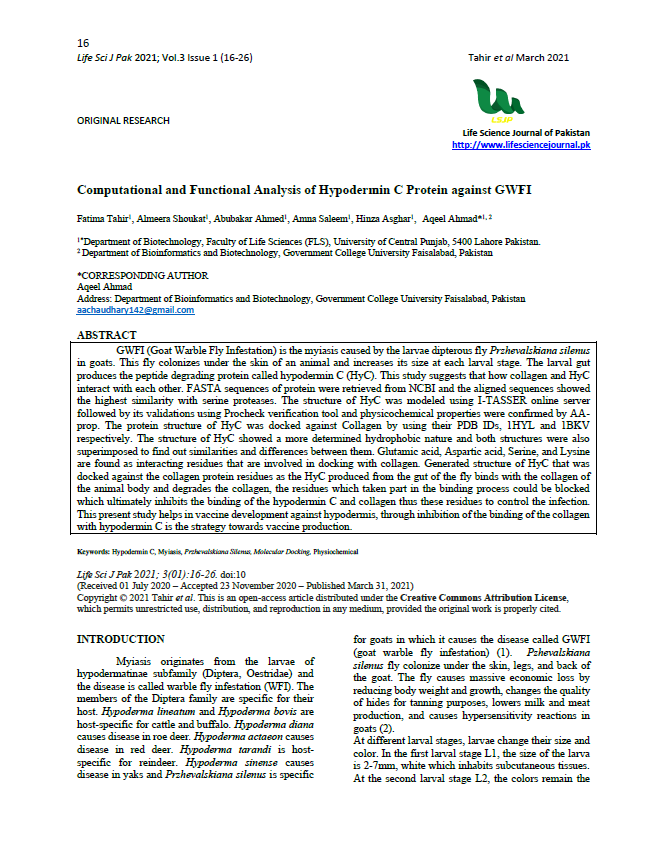Computational and Functional Analysis of Hypodermin C Protein against Goat Warble Fly Infestation
Main Article Content
Abstract
GWFI (Goat Warble Fly Infestation) is the myiasis caused by the larvae dipterous fly Przhevalskiana silenus in goats. This fly colonizes under the skin of an animal and increases its size at each larval stage. The larval gut produces the peptide degrading protein called hypodermin C (HyC). This study suggests that how collagen and HyC interact with each other. FASTA sequences of protein were retrieved from NCBI and the aligned sequences showed the highest similarity with serine proteases. The structure of HyC was modeled using I-TASSER online server followed by its validations using Procheck verification tool and physicochemical properties were confirmed by AA-prop. The protein structure of HyC was docked against Collagen by using their PDB IDs, 1HYL and 1BKV respectively. The structure of HyC showed a more determined hydrophobic nature and both structures were also superimposed to find out similarities and differences between them. Glutamic acid, Aspartic acid, Serine, and Lysine are found as interacting residues that are involved in docking with collagen. Generated structure of HyC that was docked against the collagen protein residues as the HyC produced from the gut of the fly binds with the collagen of the animal body and degrades the collagen, the residues which taken part in the binding process could be blocked which ultimately inhibits the binding of the hypodermin C and collagen thus these residues to control the infection. This present study helps in vaccine development against hypodermis, through inhibition of the binding of the collagen with hypodermin C is the strategy towards vaccine production.
Article Details

This work is licensed under a Creative Commons Attribution 4.0 International License.

